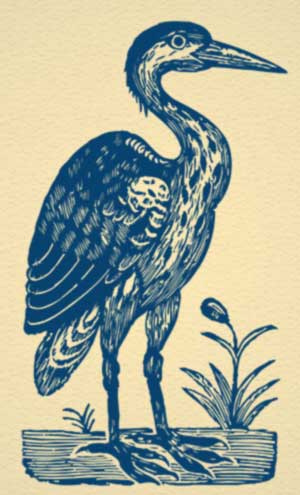Repertoire
Founded as a “Renaissance choir,” Blue Heron is more accurately described as a 21st-century vocal ensemble that mostly sings music composed between 1400 and 1600. These dates, conveniently round and memorable, encompass what is usually taught as the Renaissance in music history classes, a huge period extending from the birthdates of John Dunstaple and Guillaume Du Fay to the beginnings of opera and the widespread adoption of basso continuo. Whether the enormous quantity of music composed within these two centuries actually belongs to a coherent and distinguishable “musical Renaissance” is a matter of considerable debate, to say the least. Whatever one’s answer to that question, however, it is beyond argument that these were golden years for polyphonic vocal music. There is such a wealth of wonderful music from this period that one can easily wander off from the few well-trodden main paths and still find more than enough fantastic music to last an ensemble’s lifetime, and it gives us great pleasure to find music that is seldom sung and less often heard live but that has the power to make a person sit up and listen. Some of this music is lesser-known work by well-known composers, and some of it is music by composers even specialists don’t know. And sometimes we like to sing famous pieces, too!
Within the general confines of 1400 to 1600, Blue Heron’s repertoire interests fall into several broad areas, and we devote our energies as much to the study and performance of secular song as to sacred polyphony. On the early end we have explored English music from the Old Hall manuscript of circa 1415, following this thread through the works of Dunstaple (the first of which date from the 1420s) and into the generation or so afterwards, including Walter Frye, Robert Morton, and a host of sundry composers, some anonymous, many named John. Another thread connects Dunstaple to Du Fay and Binchois via the celebrated “contenance angloise” and thence to the so-called “central tradition” of fifteenth-century Franco-Flemish polyphony, ranging from Du Fay through Johannes Ockeghem to Josquin Desprez and onwards to Nicolas Gombert and beyond. In 2014-15 we inaugurated Ockeghem@600, a long-term project exploring the complete works of Ockeghem (c. 1420-1497): four motets, about a dozen masses, and about two dozen songs.
Advancing further into the sixteenth century, we have explored Spanish music between about 1500 and 1600, including music sung in New Spain, and presented what we believe to be North American premieres of several works by Cristóbal de Morales and Francisco Guerrero that were rediscovered and edited by the Australian musicologist and conductor Michael Noone (Boston College, Ensemble Plus Ultra). We have sung Victoria’s famous Requiem, a mass by Alonso Lobo based on a motet by Guerrero, and numerous songs by Spanish composers, many anonymous. Our program “Song of Songs / Songs of love” presents sacred works setting verses from the Biblical Song alongside secular songs of love and loss; the program, performed at the 2012 Berkeley Early Music Festival and in New York City as well as on our series in Cambridge, featured an actress declaiming portions of the Song, in a modern translation faithful to the Hebrew original, and poems by Lope de Vega and others.
Blue Heron’s debut concerts in October 1999 featured music from the Peterhouse partbooks (c. 1540), a very important and largely neglected source of early sixteenth-century English sacred music. Over the years since we have performed many works from this rich and unexplored repertory, which has been made accessible once again through the marvelous efforts of the English musicologist Nick Sandon, and have recorded five discs of the music, including music by Hugh Aston, Robert Jones, Nicholas Ludford, John Mason, Richard Pygott, Robert Hunt, and anonymous. The fifth volume in the series won the Gramophone Classical Music Award for Early Music in 2018 and the five discs are now available as a boxed set entitled The Lost Music of Canterbury.
Blue Heron has pursued an interest in Italian madrigals for many years, performing the complete Eighth Book of Madrigals by Luca Marenzio at the International Marenzio Conference at Harvard University in April 2006, and, in 2013-14, a program of madrigals setting texts from Petrarch’s Canzoniere. Like our Song of Songs program, the Petrarch program incorporated an actor reading poetic texts. In 2015 Blue Heron and Jessie Ann Owens won the Noah Greenberg Award from the American Musicological Society in support of a project to record Cipriano de Rore’s first book of madrigals (1542) in its entirety; the 2-CD set will be released in the fall of 2019.
The ensemble has performed very early music (organa by the 12th-century French composer Perotinus), very recent music (new works by Elliott Gyger), and more, including a multimedia production of Guillaume de Machaut’s Remede de Fortune, Gabriel Fauré’s Requiem in its original orchestration (a collaboration with the chamber orchestra A Far Cry), and Le Cantique des cantiques by the mid-20th-century French composer Jean-Yves Daniel-Lesur. In 2014 Blue Heron recorded a CD of music to accompany the book Capturing Music: The Story of Notation by Thomas Forrest Kelly. The selections include plainchant, organa by Leonin and Perotin, 13th-century motets, 14th-century songs by Machaut, Senleches, and Cordier, and more.
In April 2008, in conjunction with the exhibition El Greco to Velázquez: Art during the Reign of Philip III at Boston’s Museum of Fine Arts, Blue Heron presented a program featuring singers, the cornetts, shawms, and trombones of the Boston Shawm & Sackbut Ensemble, strings, organ, and Spanish harp. In September 2011 we collaborated with the Harvard University Art Museums to present a program entitled “Music for Three Sovereigns,” featuring music by Josquin, Isaac, and Senfl, in conjunction with Prints and the Pursuit of Knowledge in Early Modern Europe, an exhibition that examined how Northern Renaissance artists contributed to the scientific discoveries of the 16th century/ In February 2017 the ensemble performed “Music by Du Fay and Binchois for Florence and the Medici” at the National Gallery of Art in Washington, DC, alongside the exhibition Della Robbia: Sculpting with Color in Renaissance Florence, and in September 2018 prepared a program of 15th-century Franco-Flemish music entitled “Flos florum / Fleur des fleurs / Flower of flowers” to complement an exhibition of Books of Hours at the Musée des Beaux-Arts de Montréal, Resplendissantes enluminures: Livres d’heures du XIIIe au XVIe siècle dans les collections du Québec / Resplendent Illuminations: Books of Hours from the 13th to the 16th Century in Quebec Collections.
As for what a “choir” might be, see Performance practice.



